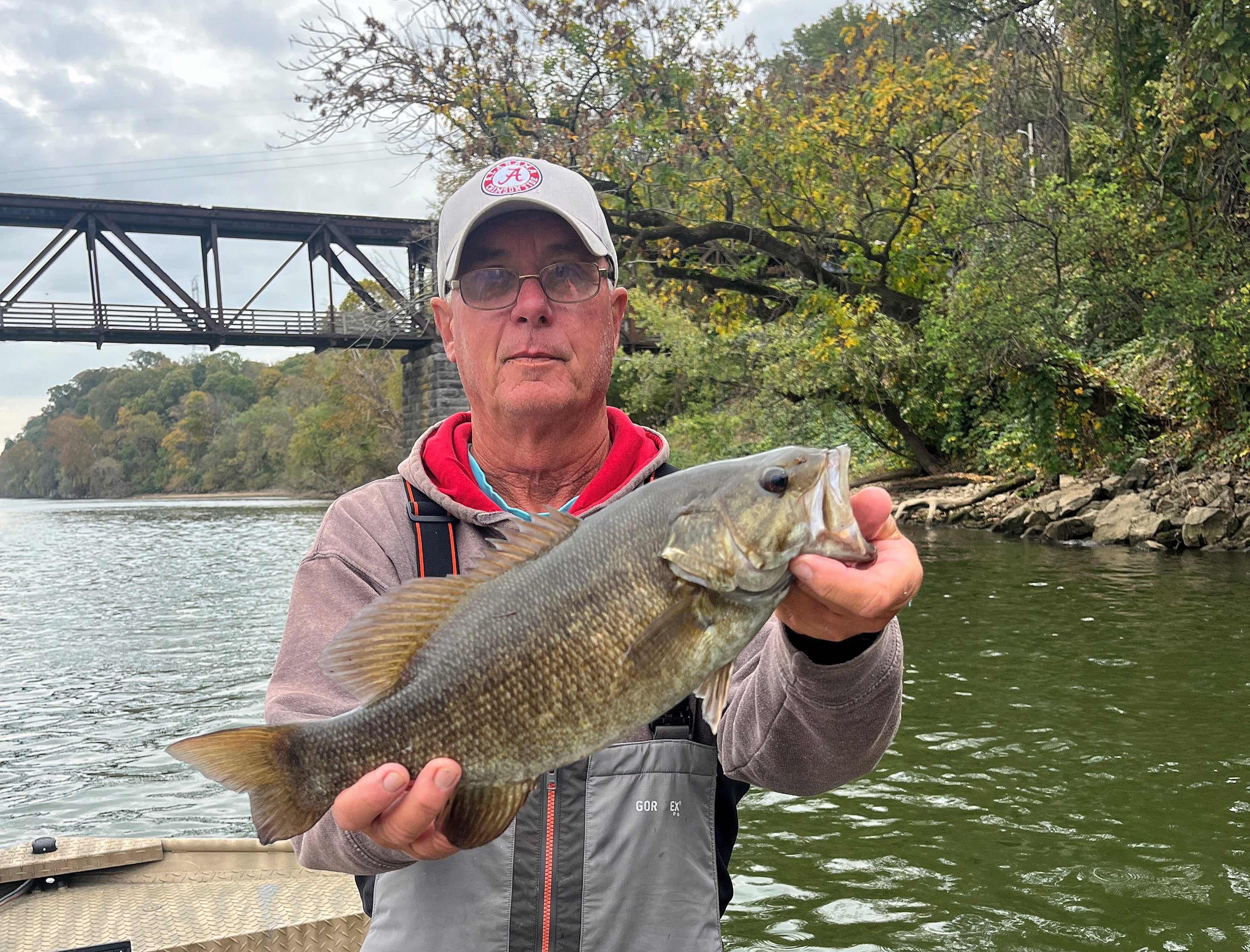By DAVID RAINER, Alabama Department of Conservation and Natural Resources
Andy Poss knows the Tennessee River’s Pickwick Lake from top to bottom – literally. Fishing for both largemouths and the scrappy smallmouths, as well as crappie, is what he does now. For 15 years prior, he probed the lake from bottom to top to make a living.
Poss was a commercial fisherman and mussel diver during those 15 years until, in his words, “I got tired of being wet all the time. And it’s a lot of work to handle 2,000 hooks a day – baiting 1,000 hooks and then taking up 1,000 hooks.”
During that time, however, he added a wealth of knowledge about Pickwick to what he learned in recreational fishing time.
“I grew up in a family of fishermen,” said 62-year-old Poss. “It was all rod and reel when I started. I devoted myself to spending time on the river and, for those 15 years, that was my job of commercial fishing and mussel diving. I would guide some for smallmouths in the spring and fall, the better times of the year.”
Those pursuits eventually left him light in the wallet, so he turned to his vocational training and joined the pipefitters union. He has welded pipe all over the U.S.
Diehard bass anglers may know Poss for another reason involving a famous – some say infamous – bass bait, the Alabama Rig.
“I was supposed to start a job, and it got pushed back a month,” he said. “I told Dad (Houston) ‘I got something I want to try. I’ve had an idea about this.’ I had seen those guys trolling with umbrella rigs below the dam for stripers and hybrids. I wanted to make one you could cast. Dad has always been a fish bait tinkerer, and he had some spinnerbait wire. I used pop rivets you use on the back end of a buzzbait. It was small wire and I didn’t really know how it would do.
“We went to a grass line where we’d been catching some fish. After about the third cast, I told Dad this thing will whack ’em. That rig didn’t last but about eight fish before it was totally destroyed. I went back and got some heavier wire. I had to tweak to where the wire was not too limber and not too stiff. I lightened the head. I found out I had to have swivels with clips. The fish really liked it. Something new always catches them for a while.”
A few professional bass anglers found out about the Alabama Rig, and in 2011 veteran pro Paul Elias used it on Lake Guntersville to catch 20 bass that weighed 102 pounds to win the Walmart FLW Tour event. Six months after the bait hit the market, bass tournaments outlawed it.
Poss also found out that obtaining a patent for a fishing lure takes a lot of work and money. He filed for a patent in 2010. More than two years into the process, Poss found out that similar patent had been filed in 2009. After years of frustration, he walked away.
“There’s not an original Alabama Rig out there today,” Poss said. “I don’t make them. I don’t sell them. The financial reward was definitely not there. Anybody comes up with a good idea, call me, and I’ll give you all the free advice you need.”








